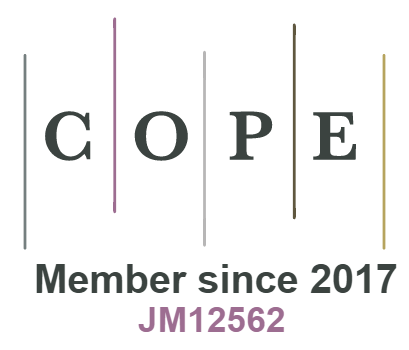Evaluation of Improved Tef [Eragrostisteff /Zucc./Trotter] Production Technologies in Central High Lands of Ethiopia
DOI:
https://doi.org/10.18034/ei.v7i1.453Keywords:
Becho, economic analysis, environmental suitability, farmers’ acceptability, gender aspect, integrated validation, protocolAbstract
A study was carried out to evaluate the performance of improved varieties of tef and production technologies in Becho district of Oromia, Centeral Ethiopia. Five improved tef varieties along with the local were selected and used as treatments (that is, Dega tef (T1), Guduru (T2), Kena (T3), Kora(T4),Quncho(T5) and Local (T6)) arranged in a Randomized Complete Block Design (RCBD) with six replications using six farmers’ fields. Yield and yield related parameters were analyzed using SAS statistical software version 9.0. Economic analysis/profitability, preference/acceptability, gender and nutrition and environmental suitability data recording were performed to compare treatments advantages and identify the best performing varietity/ies. All the yield and yield related components were significantly different between the varieties at 5 % probability level %) except for plant height in which there was no significant difference among varieties. Variety Dega tef gave the highest grain yield with average grain yield of 3610.6kg/ha followed by Quncho and Kora and also had about 40% yield advantage over the local variety with average grain yield of 2577.83kg/ha and had about 116.95%, 110.25% and 90.80 % yield advantage over the national, regional and zonal average yield of tef in 2016/2017 Meher season of CSA data respectively. Based on farmer’s preference analysis variety Dega tef had high acceptability (75%) followed by Quncho (73%) and Kora (70%). Guduru variety has the least in acceptability (21%). As the result from the economic analysis showed that Dega tef variety had the maximum net benefit (79,536.69birr/ha) followed by Quncho (67,106.97birr/ha) and Kora (63,746.96birr/ha). Variety Guduru had the least net benefit result of about 53,648.17birr/ha. Based on the rules of decision making and the integrated scoring set for technology validation, two of the three improved varieties meet the requirements to be recommended. Therefore, we recommend Dega tef, Quncho, and Kora varieties for Becho areas and other areas with similar agro-ecological conditions in the central highlands of Ethiopia.
Downloads
References
Alaunyte I., Stojceska V., Plunkett A., Ainsworth P., Derbyshire E. (2012). Improving the quality of nutrient-rich Teff (Eragrostis tef) breads by combination of enzymes in straight dough and sourdough breadmaking. J. Cereal Sci. 55 22–30 10.1016/j.jcs.2011.09.005 DOI: https://doi.org/10.1016/j.jcs.2011.09.005
Assefa A. (2014). The dire need to support ‘orphan crop’ research [Online]. Sci Dev Net. Available at: http://www.scidev.net/global/agriculture/opinion/the-dire-need-to-support-orphan-crop-research.html?hts0021=&stay=full.
Central Statistical Authority (CSA), 2008: Statistical Abstract of Ethiopia 2008. Ethiopian agricultural research organization, Addis Ababa, Ethiopia.
CSA (Central Statistical Agency) (2017). Agricultural Sample Survey. Volume I: Report on Area and Production of Major Crops. Addis Ababa, Ethiopia.
Ebba, T., 1969: Tef (Eragrostis tef). The Cultivation, Usage and Some of Its Known Diseases and Insect Pests. Part I. Expt. Sta. Bull. No. 66. Haile Sellassie Univesity (HSIU), College of Agriculture, Dire Dawa, Ethiopia.
Ketema S. (1997). Tef, Eragrostis tef (Zucc.) Trotter. Rome: Institute of Plant Genetics and Crop Plant Research, Gatersleben/International Plant Genetic Resources Institute.
Ketema, S., 1993: Tef (Eragrostis tef): Breeding, Genetic Resources, Agronomy, Utilization and Role in Ethiopian Agriculture. Institute of Agricultural Research, Addis Ababa, Ethiopia.
Naylor R. L., Falcon W. P., Goodman R. M., Jahn M. M., Sengooba T., Tefera H., et al. (2004). Biotechnology in the developing world: a case for increased investments in orphan crops. Food Policy 29 15–44 10.1016/j.foodpol.2004.01.002. DOI: https://doi.org/10.1016/j.foodpol.2004.01.002
Spaenij-Dekking L., Kooy-Winkelaar Y., Koning F. (2005). The Ethiopian cereal tef in celiac disease. N. Engl. J. Med. 353 1748–1749 10.1056/NEJMc051492.
Spaenij-Dekking, L., Y. Kooy-Winkelaar, and F. Koning, 2005: The Ethiopian cereal tef in celiac disease. N. Engl. J. Med. 353, 16. DOI: https://doi.org/10.1056/NEJMc051492
Tefera H, Belay G 2006: Eragrostis tef (Zuccagni) Trotter. [Internet] Record from Protabase. In:Brink M, Belay G(eds) PROTA (Plant Resources of Tropical Africa/Ressourcesvegetalesdel’Afriquetropicale),Wageningen.http://database.prota.org/search.htm (December, 2010).
Teklu Y, Tefera H 2005: Genetic improvement in grain yield potential and associated agronomic traits of tef (Eragrostis tef) Euphytica, 141, 247–254. DOI: https://doi.org/10.1007/s10681-005-7094-7
Vavilov, I., 1951: The Origin, Variation, Immunity and Breeding of Cultivated Plants. Translated from the Russian by K. S. Chester, Ronald Press Co, New York, USA. DOI: https://doi.org/10.1097/00010694-195112000-00018
--0--
Downloads
Published
Issue
Section
License
Engineering International is an Open Access journal. Authors who publish with this journal agree to the following terms:
- Authors retain copyright and grant the journal the right of first publication with the work simultaneously licensed under a CC BY-NC 4.0 International License that allows others to share the work with an acknowledgment of the work's authorship and initial publication in this journal.
- Authors are able to enter into separate, additional contractual arrangements for the non-exclusive distribution of the journal's published version of their work (e.g., post it to an institutional repository or publish it in a book), with an acknowledgment of its initial publication in this journal. We require authors to inform us of any instances of re-publication.









